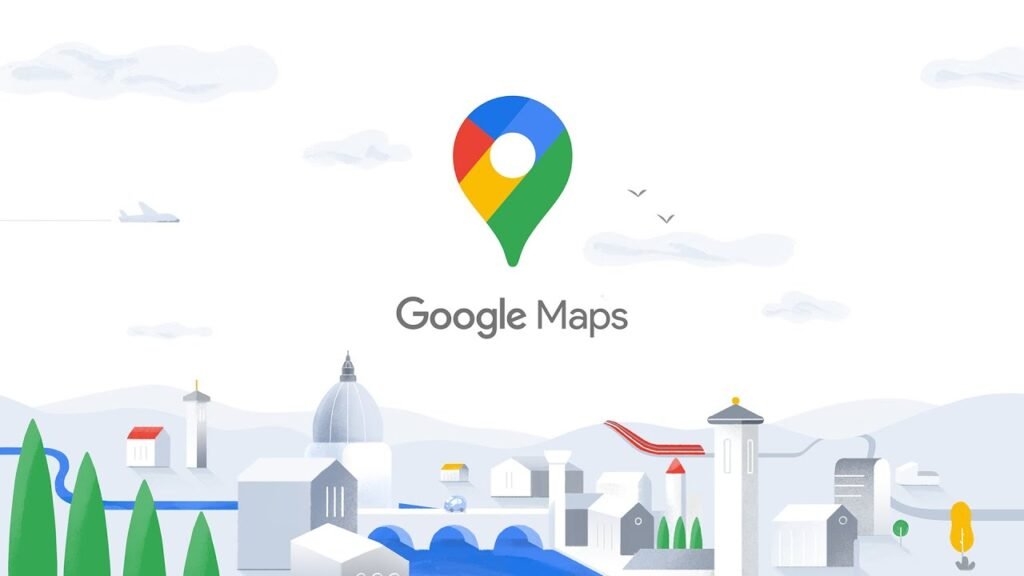Introduction
Reviews posted on the internet have become an increasingly important factor in determining how customers behave in today’s rapidly changing digital environment. People look on reviews to help them make decisions about a variety of things, including where to eat, which hotel to book, and which local business to utilize. Considering that it features an integrated review system, Google Maps has developed into an indispensable tool for customers all over the world.
These reviews have the potential to either make or break the success of enterprises, particularly with regard to smaller, local businesses. Feedback that is positive can serve as a form of free marketing, encouraging new clients to try out the company’s services, but feedback that is negative can discourage potential customers from attending the business.

However, alongside the rise of internet reviews comes the problem of fake reviews. These are evaluations that are either paid for, fabricated by competitors, or generated by bots, generally with the goal of misleading consumers. In recent years, phony reviews have been a significant worry, both for users who rely on them for accurate information and businesses whose reputations can be unfairly tarnished.
To address this problem, Google Maps has created a new feature that aims to shield companies from the detrimental impacts of bogus reviews and give users with a more trusted source of information. This function not only helps filter out false content but also tells consumers about its actions, encouraging transparency. In this post, we will investigate the ramifications of this feature, its functionality, and how organizations and people alike might profit from it.
The Importance of Online Reviews for Businesses
Before going into the intricacies of the new Google feature, it’s necessary to understand why online evaluations hold such value for businesses today. The internet has radically changed the way customers interact with brands. Gone are the days when word-of-mouth recommendations were limited to personal circles. With the rise of online platforms, reviews from complete strangers now hold enormous weight in influencing decisions.
- Impact on Customer Trust:
For any organization, establishing the trust of potential clients is vital. Studies have demonstrated that customers trust online reviews as much as personal recommendations. Positive evaluations boost trust and inspire people to try new services or products. On the flip side, a deluge of negative or fraudulent reviews can contribute to a lack of confidence in a business, pushing clients away before they ever give the firm a chance. - Search Engine Optimization (SEO) Benefits:
Online reviews have a crucial effect in how businesses are ranked in search engine results. Google promotes businesses with more positive comments and involvement, leading to increased prominence in local searches. Therefore, not only can favorable reviews directly attract new clients, but they also help businesses climb the ranks on search engines like Google. - Business Reputation and Revenue:
In the digital age, a business’s reputation is greatly influenced by its online presence. For many organizations, especially smaller ones, evaluations serve as one of the key strategies of creating this presence. Good ratings lead to higher sales, whereas fraudulent or unfavorable reviews can result in lost revenue. A research by the Harvard Business Review indicated that only a one-star boost in a business’s online ranking might lead to a 5-9% rise in revenue.
Considering these points, it’s apparent that the rise of bogus reviews poses a severe threat to both businesses and consumers, contributing to the growing issue of digital scams. Google Maps’ latest feature seeks to address these concerns head-on.
Understanding the Growing Threat of Fake Reviews
Fake reviews are not a new phenomena, but their frequency has grown in recent years as internet platforms continue to expand in prominence. Businesses are regularly targeted by bogus reviews for numerous reasons:

- Competitor Sabotage:
Rival businesses could submit phony negative reviews to hurt a competitor’s reputation. This unethical activity can seriously affect a firm, especially small enterprises that rely on local clients and have minimal means to protect their online reputation. - Paid or Incentivized Reviews:
Some firms might engage in employing people or deploying bots to create favorable reviews, seeking to artificially increase their ratings. While this may seem like a shortcut to success, it ultimately undermines trust in the review system. - Bot Activity and Automated Reviews:
The employment of bots to generate bogus reviews is another problem. These automated algorithms can flood a business’s page with either positive or negative reviews, depending on who is behind the operation.
The result of these operations is a distorted online environment where firms either gain from fraudulently raised ratings or suffer due to targeted attacks. For consumers, this implies that the reviews they rely on are no longer true reflections of the service or product quality. Instead, customers are left sorting through a mix of legitimate and fraudulent evaluations, making informed decision-making tough.
Google Maps’ New Feature: How It Works
To fight the issue of phony reviews, Google Maps has created a function that helps filter out misleading information, ultimately safeguarding businesses and enhancing the user experience. Let’s discuss how this functionality works and what consumers and businesses should expect:
1. Detection and Removal of Fake Reviews
Google has invested in advanced machine learning algorithms and artificial intelligence to detect trends linked with bogus reviews. These algorithms can identify activities that are typically associated to bogus review activity. For example:
- Multiple Reviews from the Same Source: If a single source or user account is leaving reviews for several businesses in a short time frame, this could be a red signal.
- Inconsistent Behavior: Google Maps’ algorithms can also study a reviewer’s history. If someone has routinely left reasonable evaluations but suddenly starts writing several unfavorable or suspiciously glowing reviews, this could provoke an investigation.
- Spammy Language: Reviews that are overtly promotional, utilize repeated language, or appear to be copy-pasted are generally detected by the system.
Once the technology finds a bogus review, it will be automatically removed from the business’s profile. Google has been diligent in ensuring that its algorithms are sophisticated enough to discriminate between real and false reviews to limit the likelihood of authentic reviews being wrongly eliminated.
2. Alert Notifications to Users
When Google eliminates fraudulent reviews, consumers who gave legitimate feedback will be notified through alert notifications. This promotes transparency, allowing users to understand that their evaluations are being examined and their contributions to the review ecosystem matter.
By ensuring users keep informed, Google also hopes to strengthen trust in the platform. Users will know that their honest reviews are treasured, and any deceptive content is being actively eliminated.
3. Temporarily Halting Reviews for Targeted Businesses
In circumstances where a business is overwhelmed by an onslaught of fraudulent reviews, Google Maps will temporarily limit the ability to write new ratings for that business. This function acts as a cooling-off period, providing Google time to examine and address the issue without allowing more damage to the business’s online reputation.
This interim block might be a crucial safety for firms attacked by coordinated operations, where several phony reviews are submitted in a short time. By blocking new reviews, Google prevents additional harm while examining the situation.
4. User and Business Reporting Mechanism
Google Maps also provides users and businesses with the opportunity to submit bogus reviews manually. Here’s how consumers and business owners can flag harmful content:
For Users:
- Step 1: Open Google Maps on your device and navigate to the business profile in question.
- Step 2: Click on the three-dot menu displayed in the upper-right corner of the screen.
- Step 3: Select the option to report a review.
- Step 4: Choose a reason for reporting, such as “fake or misleading content.”
- Step 5: Provide any additional details if necessary, then submit the report.
For Business Owners:
- Step 1: Business owners can visit their Google My Business dashboard.
- Step 2: Find the review in question and click on the three-dot menu.
- Step 3: Select “Report as inappropriate” and provide any essential details.
This human reporting process helps users and businesses to contribute to maintaining the integrity of Google Maps, ensuring that fraudulent reviews are immediately handled.
The Feature’s Global Expansion
Initially, Google Maps released this feature in the United Kingdom, where it was tested with local companies and users. The results were extremely positive. Business owners reported less concerns with phony reviews, and users welcomed the increased transparency that the service gave.

Given the success of the experiment in the UK, Google has since expanded the feature to the United States, offering American businesses and users the same protections. This is part of a bigger global rollout, which will see the functionality introduced in more nations over the coming months. Businesses in different locations may now look forward to a safer and more open evaluation system that protects them against fraudulent feedback.
Benefits for Local Businesses
For many businesses, especially small and local establishments, internet evaluations are one of the key strategies of recruiting new clients. Local companies typically rely heavily on tools like Google Maps to help them stand out in their communities. Here’s why this new tool is a game-changer for local businesses:
1. Enhanced Reputation Management
One of the most notable benefits of this function is the ability to manage a business’s internet reputation more efficiently. Fake reviews can ruin a business’s image, even if they are later removed. This feature ensures that such damage is minimized and firms are not unfairly rated based on fake input.
By weeding out bogus evaluations before they make a lasting impact, Google Maps gives businesses better control over their reputation. This is particularly helpful for smaller firms that may not have the capacity to reply to every bad comment.
2. Increased Consumer Trust
Consumers are more likely to trust firms with authentic reviews. If consumers realize that Google Maps is constantly striving to remove bogus content, they can feel better
confident in the reviews they read. This, in turn, promotes businesses as they are perceived as more trustworthy and reputable.
A transparent review system creates trust between businesses and their customers, leading to stronger connections and increased customer loyalty.
3. Fair Competition
In competitive markets, false reviews can be used as a tool for sabotage. Competitors could create negative evaluations to lure clients away from competitor firms. This innovation levels the playing field by removing this immoral approach from the equation.
Businesses may now compete primarily on the quality of their products or services, rather than worrying about being unfairly targeted by bogus reviews.
User Advantages and Improved Transparency
While the major objective of this new feature is to safeguard businesses, it also delivers considerable benefits to consumers:
1. More Reliable Reviews
Users rely on Google Maps reviews to make informed judgments about where to eat, buy, or seek services. The eradication of bogus reviews assures that the feedback they are reading is legitimate and trustworthy. This leads to better user experiences and more accurate decision-making.
By screening out fake ratings, Google Maps is helping customers avoid businesses that might not fulfill their expectations based on inaccurate information.
2. Increased Awareness of Review Manipulation
The notification system that tells consumers when false reviews are removed gives an additional layer of transparency. Users are made aware that Google is continuously monitoring and addressing bogus content, which helps to establish trust in the site.
In addition, this method may dissuade people from participating in unethical actions, knowing that Google has the tools to detect and eliminate phony reviews.
How Businesses Can Adapt to Google Maps’ New Review Feature
The introduction of Google Maps’ new function is a significant step forward in the fight against bogus reviews, but companies also need to be proactive in controlling their online reputation. Here are some tactics businesses can implement to make the most of this new feature:
1. Encourage Genuine Reviews
One of the most effective methods to verify that a business’s online presence is authentic is by encouraging real reviews from delighted consumers. This can be done by:

- Politely asking clients to post a review after they’ve received good service.
- Including a link to the Google Maps review page in email signatures, receipts, or social media platforms.
- Offering incentives, like as discounts or minor awards, for customers who write honest feedback.
Businesses should avoid paying for or incentivizing phony evaluations, as this behavior is not only immoral but also detrimental in the long term.
2. Respond to Reviews, Both Positive and Negative
Engaging with customer feedback shows that a firm values its customers’ perspectives. By reacting to both positive and negative evaluations, businesses may demonstrate their dedication to providing exceptional service. For unfavorable reviews, offering answers or clarifications can lessen the impact of the comments, while reacting to positive reviews encourages consumer loyalty.
3. Monitor Review Activity Regularly
Business owners should keep an eye on the reviews they receive. This allows them to immediately identify any suspected false reviews and report them using Google Maps’ reporting tool. By remaining alert, businesses can preserve their brand and guarantee that their internet reviews reflect their genuine service quality.
Conclusion: A Step Towards a More Transparent Online Review System
Google Maps’ new feature to prevent phony reviews is a huge step forward in the quest to safeguard both companies and consumers from inaccurate information. By leveraging powerful algorithms, user notifications, and manual reporting systems, Google is establishing a more transparent and reliable review ecosystem. For firms, this means better control over their internet reputation and fairer competition in their markets. For consumers, it ensures more accurate and trustworthy feedback when making decisions.
As Google continues to expand this capability globally, the future of online reviews looks brighter. With this move, the IT giant is setting a new standard for how online review platforms may preserve integrity, benefiting everyone engaged in the process.







